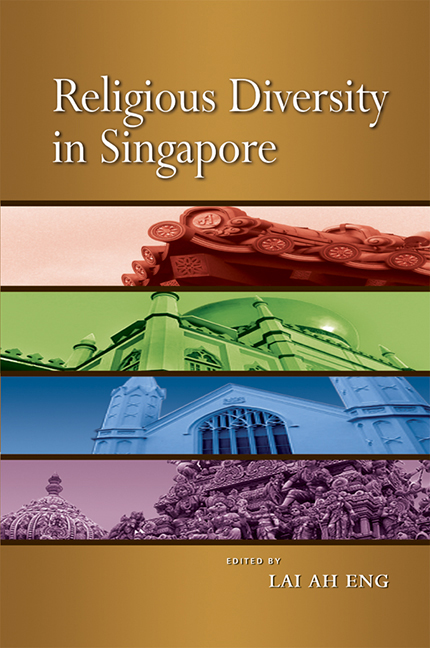Book contents
- Frontmatter
- Contents
- List of Figures and Tables
- List of Appendices
- FOREWORD
- PREFACE
- Acknowledgements
- The Contributors
- Abbreviations
- Glossary
- INTRODUCTION
- PART I The Landscape of Religious Diversity
- PART II Religion in Schools and Among the Young
- PART III Religion in the Media
- 17 Religious Reasons in a Secular Public Sphere: Debates in the Media about Homosexuality
- 18 The Internet and Religious Harmony in Singapore
- PART IV Religious Organizations in Social Services
- PART V Interfaith Issues and Interaction
- Index
18 - The Internet and Religious Harmony in Singapore
from PART III - Religion in the Media
Published online by Cambridge University Press: 21 October 2015
- Frontmatter
- Contents
- List of Figures and Tables
- List of Appendices
- FOREWORD
- PREFACE
- Acknowledgements
- The Contributors
- Abbreviations
- Glossary
- INTRODUCTION
- PART I The Landscape of Religious Diversity
- PART II Religion in Schools and Among the Young
- PART III Religion in the Media
- 17 Religious Reasons in a Secular Public Sphere: Debates in the Media about Homosexuality
- 18 The Internet and Religious Harmony in Singapore
- PART IV Religious Organizations in Social Services
- PART V Interfaith Issues and Interaction
- Index
Summary
INTRODUCTION
Since its development in the mid-1990s, the Internet has become a truly global medium, reaching most nations around the world and providing unprecedented opportunities for global interaction and information gathering for the masses. Singapore has one of the highest levels of Internet penetration in the world, where in 2002, 60.2 per cent of Singaporeans were Internet users (Kuo et al. 2002). From 2000–2005, the number of Internet users has climbed even higher, reaching 77.9 per cent (Internetworldstats 2005). Based on these figures, Singapore has the second highest Internet penetration rate in Asia, after South Korea, and much higher levels of penetration than many developed nations, including the United States (68.8 per cent) and Sweden (74.3 per cent). Moreover, the government has embarked on a number of initiatives to extend Internet penetration and use by Singaporeans, suggesting that the number of Internet users is likely to increase further. This is entirely in keeping with Singapore's status as one of the world's most globalized nations in various economic, political and cultural dimensions.
At the same time, religious faith remains an important component of social life in Singapore (Khun 1998), as in many other areas of the world. Singapore does not have one dominant faith, but is rather multi-ethnic and multi-religious. According to the 2000 government census, 85 per cent of Singaporeans stated that they had religious affiliations to Buddhism, Taoism, Christianity, Islam, Hinduism or other religions (Yearbook of Statistics Singapore 2000). Government policy towards religious faith is based upon secularism while valuing both religious and racial harmony as necessary preconditions for political and economic stability (Hong 2005). Within the Singaporean context, issues of religion and race are inextricably entwined, and it is generally acknowledged by the government that religion is an important tool in ensuring the continuity of traditional and cultural values. Furthermore, Singapore's constitution highlights that although Singaporeans have the right to religious freedom and practice, they are prohibited from engaging in acts that are “contrary to any general law relating to public order, public health or mortality”, thus placing restrictions on the type of religious activities allowed (Hong 2005).
- Type
- Chapter
- Information
- Religious Diversity in Singapore , pp. 434 - 456Publisher: ISEAS–Yusof Ishak InstitutePrint publication year: 2008

